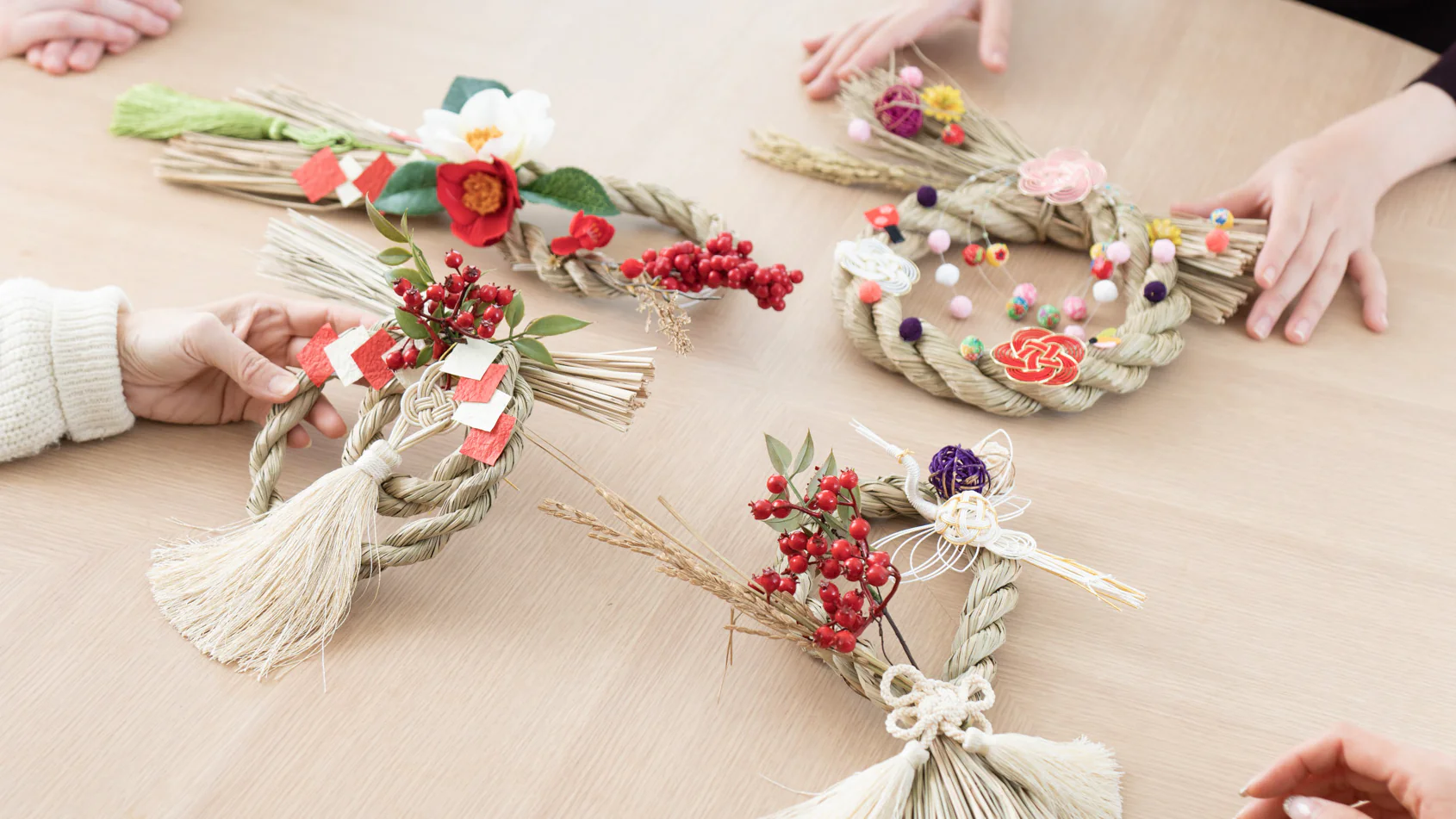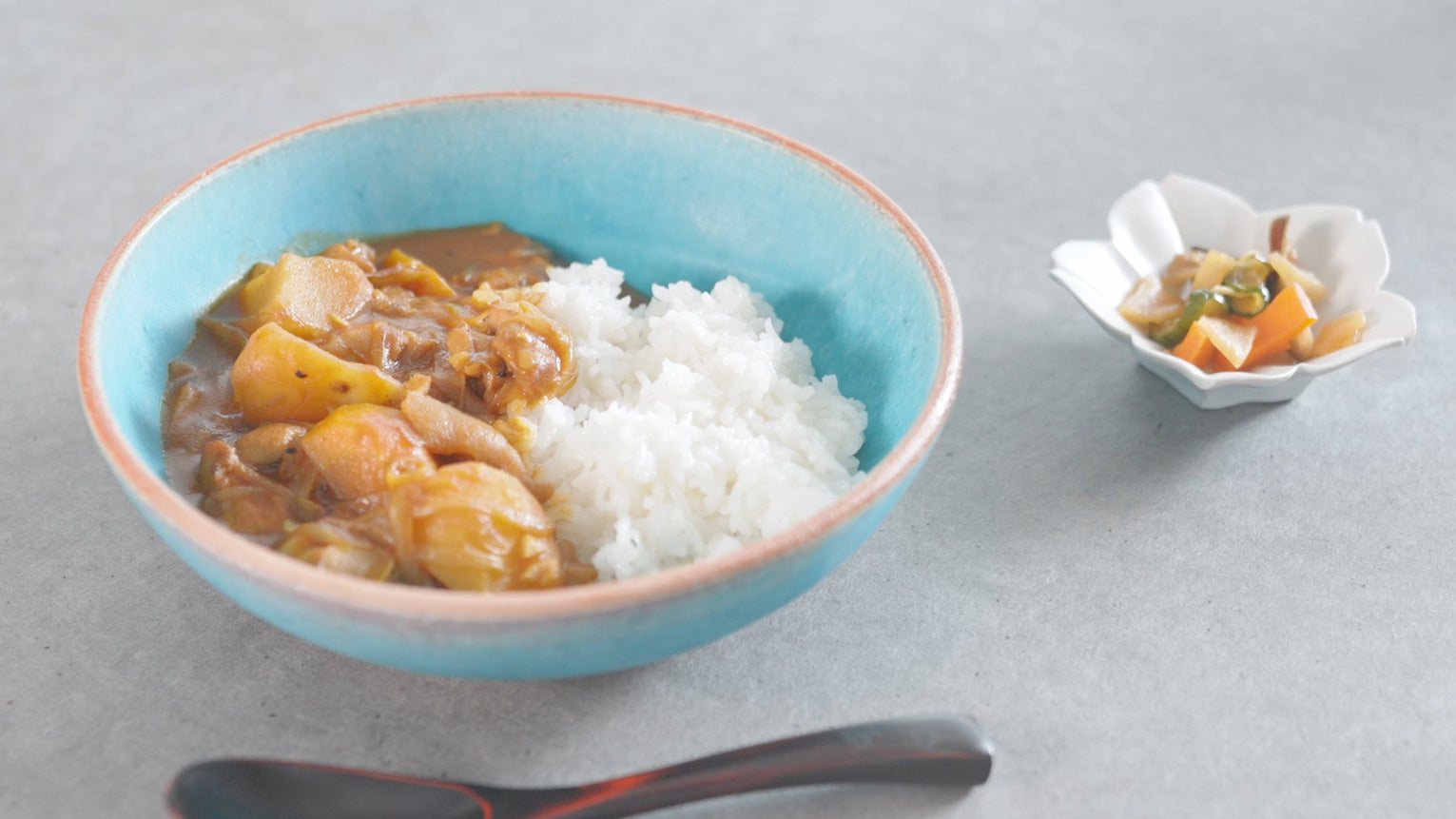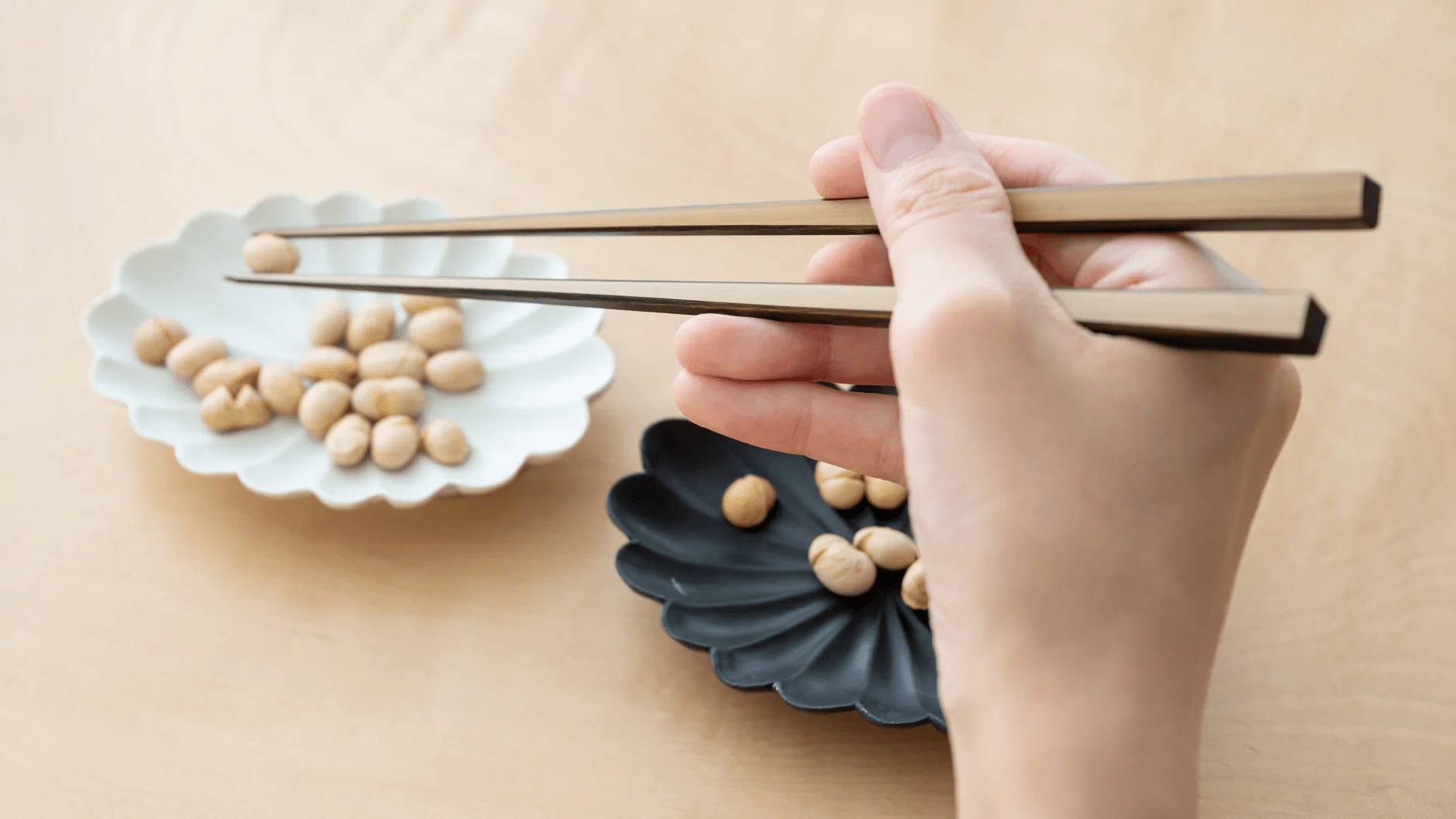
Make Your Own Luck: Creating Shimekazari with Team Musubi
Written by Team MUSUBI
It's now December, which means the end of the year looms ahead. It's time to prepare for 2025 — and in Japan, this is no small undertaking. (You can read more about the New Year traditions in our blog post here.) In addition to carrying out the osouji, the year-end deep clean, around December 13th (known as kotohajime) to December 28th, you'll start seeing a variety of items go up in Japanese households. One of the most iconic items is the shimekazari, or New Year’s wreath.
Shimekazari is made of shimenawa, a tightly wrapped rope made of straw that is then hung over the torii, or gates, at Shinto shrines. The shimenawa is hung there to create a boundary between the sacred space of the shrine, where gods live, and the outside world, where bad spirits wander. Shimekazari serves a similar purpose. It is hung on the entry door to keep your home sacred and protected from misfortune.
These small wreaths can be purchased pre-decorated at stores across Japan, or done DIY to make it your own style. Here at MUSUBI KILN, we've done the latter.

table of contents
How to Make Shimekazari
As explained above, shimekazari’s base is shimenawa, a rope made of straw. In Japan, these can be found ready-made at variety stores and sometimes even 100-yen shops, but we understand that the traditional materials may be a little difficult to procure overseas. For a similar visual, you can use raffia or paper ribbon. This may be easier to find at a craft store and will easily wrap together to become a lovely DIY shimenawa. But you can also use any materials you may already have on hand to fashion a braided wreath shape and make it even more unique to you.

After you’ve created the wreath, you can essentially use anything that is special to you or things that you feel will bring luck to your home to decorate the shimenawa and turn it into a shimekazari. You can use glue to adhere your decorations to the wreath—we used a hot glue gun to make sure the decorations stayed put if the shimekazari was hung outside.

Traditionally, a shimekazari is decorated with shide, zig-zag paper strips, and additional auspicious items, such as daidai, a citrus fruit that represents longevity. Some other ideas include tassels, camellia flowers, and nandina berries, representing winter in Japan. But, as you’ll see below with Team Musubi’s wreaths, the only limit to decorating is your imagination!
Modern-Style Shimekazari

Tominaga-san went for a modern-style shimekazari, decorating it with cranes and turtles, a pair often seen in Japanese culture that represents long life. She said, "It's perfect for the New Year. Red nandina and golden rice ornaments add to the festive and glamorous aesthetic."

Minimalist-Style Shimekazari

Aiba-san's minimalist wreath made a big impression at the table. She told us she made it as a gift for her mom, whose home has a narrow entryway, which informed the petite form and simple decoration: "To give it a festive New Year's feel, I decided on red and white as the main colors. In the center, I attached a beautifully tied decorative cord with a tassel, and above it, bright red nandina berries, a symbol of winter. Lastly, I added a red and white paper ornament, handmade by Yukawa-san, designed to resemble the traditional shihobeni,the colored paper used for placing kagami mochi."

Kawaii-Style Shimekazari

Yamashita-san's shimekazari turned out super kawaii, utilizing cute shapes and colors all throughout the wreath. She wanted to make it pop and cute, saying, "I attached traditional motifs like mizuhiki knots because I want to use it as an interior decoration. I added a lot of pieces to create something colorful and cute."

Fusion-Style Shimekazari

Dana's shimekazari combines the usual Christmas colorway of red and green with the classic New Year's colorway of red and white for something that brings together both American and Japanese culture. "I wanted to make something that was eye-catching and beautiful so I would be happy to see it on my door when I arrived home. I also wanted to enhance the beautiful shape of the wreath, so I went a bit asymmetrical with the nandina berries and camellia blossoms. The tassel at the bottom elongates it just a little more, maybe for extra luck."

We hope this has inspired you to do a little DIY ahead of the New Year holiday! If you make your own shimekazari, please tag @musubikiln on Instagram to show us your creation.







Leave a comment
This site is protected by hCaptcha and the hCaptcha Privacy Policy and Terms of Service apply.